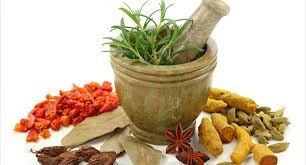Formulation and Comparative Evaluation of Dasamoolarist, an Ayurvedic Formulation
Kushwaha Ashok1* and Aind Jaya Gladish2
1, Shri RNS College of Pharmacy, Gwalior, MP-India
2, Nimar Institute of Pharmacy, Dhamnod, Dhar, MP - India
Abstract
The present investigation was done to formulate and evaluated dasamoolaristam and compare the efficacy with the brand available in the market as per WHO and Indian Pharmacopoeial specifications. Various physicochemical parameters such as alcohol-soluble extractive, water-soluble extractive, total ash, acid-insoluble ash, total solid, and alcohol content were determined and compared.
Keywords: Dasamoolarist, Ayurvedic formulation, Evaluation
*Corresponding Author
Introduction
In Ayurvedic aristas, Dasamoolarist is a unique combination of ten herbs, where 'dasa' means ten and 'moola' means root. These preparations are regarded as valuable therapeutic formulations due to their efficacy and desirable features. It is a rich tonic that stimulates the nervous system. Dasamoola is a formal combination of ten herbs and has the ability to act on a wide range of health problems; especially those caused by both Vata and Kapha. According to Sarngadhara Samhita, an ancient text, Dasamoolarist "nourishes the lean, stimulates the production of Ojas and gives progeny to the childless." It is an excellent tonic for convalescence and general debility. It helps you to restore health and vitality. It is also recommended for cardiac disorders, respiratory diseases, asthma and breathing troubles, cough, pneumonia, gastric irritation and anemia. It is curative for health problems caused by Vata and Kapha. This is a significant tonic effective in nerves and body weakness, loss of appetite, colic abdominal pain and disorders of emaciation. Dasamoolarist is also widely recommended for cardiac disorders, respiratory diseases, asthma and breathing troubles, cough, pneumonia, gastric irritation and anemia. It is also mixed with other arishtas and used for certain diseases.1
They are generally prepared by soaking the drug, either in powdered form or in the form of decoction (Kasaya), in a solution of sugar or jaggery, for a specified period of time. During this period, the preparation undergoes a process of fermentation to generate alcohol, thus facilitating the extraction of the active principles contained in the drugs. The quality control parameters of herbal formulations are of great importance in order to justify their acceptability in modern systems of medicine. Herbal formulations available in the market are usually not properly standardized and are not assessed for their quality. Since, the use of herbal formulations by patients is increasing, there is an urgent need for pharmacists and physicians to have knowledge about the safety and efficacy of these preparations.2-3 Keeping these thing in mind the present was undertaken to formulate and evaluate dasamoolarist and to compare its efficacy with the brand available in the market.
Material and methods
Different herbs used in the preparation were purchased and collected from the villagers and tribal of Madhya Pradesh and were authenticated by Head, Department of Pharmacognosy of our institute. Brand of dasamoolarist was purchased from the Ayurvedic Pharmacy, Gwalior. The samples was stored in the refrigerator at 8ºC and collected for experiments under aseptic conditions. All physical evaluations were determined as per the method prescribed in the Indian Pharmacopoeia.4-5
Results and conclusion
Table 1: Comparative Physical evaluation of dasamoolarist
|
S/No. |
Parameter |
Formulated |
Branded |
|
1. |
pH |
3 |
2.9 |
|
2. |
Total solid content (% w/v) |
20.72 |
22.89 |
|
3. |
Alcohol content (% v/v) |
7 |
12 |
|
4. |
Water-soluble extractive (% w/w) |
9.81 |
11.60 |
|
5. |
Alcohol-soluble extractive (% w/w) |
8.20 |
9.55 |
References
- Kokate C.K., Purohit A.P. and Gokhale S.B. (2005). A Text-book of Pharmacognosy, 31st edition, Nirali Prakashan
- Dwivedi Sumeet and Dwivedi Abhishek (2010). Need of standardization of Ayurvedic herbs: Present status and future prospects; Abstract in National Seminar on Analytical Method Development and Biomedical Analysis, organized by B.R.Nahata College of Pharmacy, 28-29.Oct.2010, Mandsaur, M.P.
- Dwivedi Sumeet and Dubey Raghvendra (2009). QC of Herbals with special reference to standardization parameters: An overview; Abstract in National Seminar on Technological and Regulatory aspects of Herbal Drugs Analysis, 7-Oct.,2009, Mandsaur, M.P.
- Guidelines for the Assessment of Herbal Medicines (1991). Document No. WHO/TRM/91.4, World Health Organization, Geneva.
- Ayurvedic Formulary of India (2003). Central Council for Research for Ayurveda and Siddha, 2 Edn., Part 1, Ministry of Health and Family Welfare, Government of India, 3. nd

